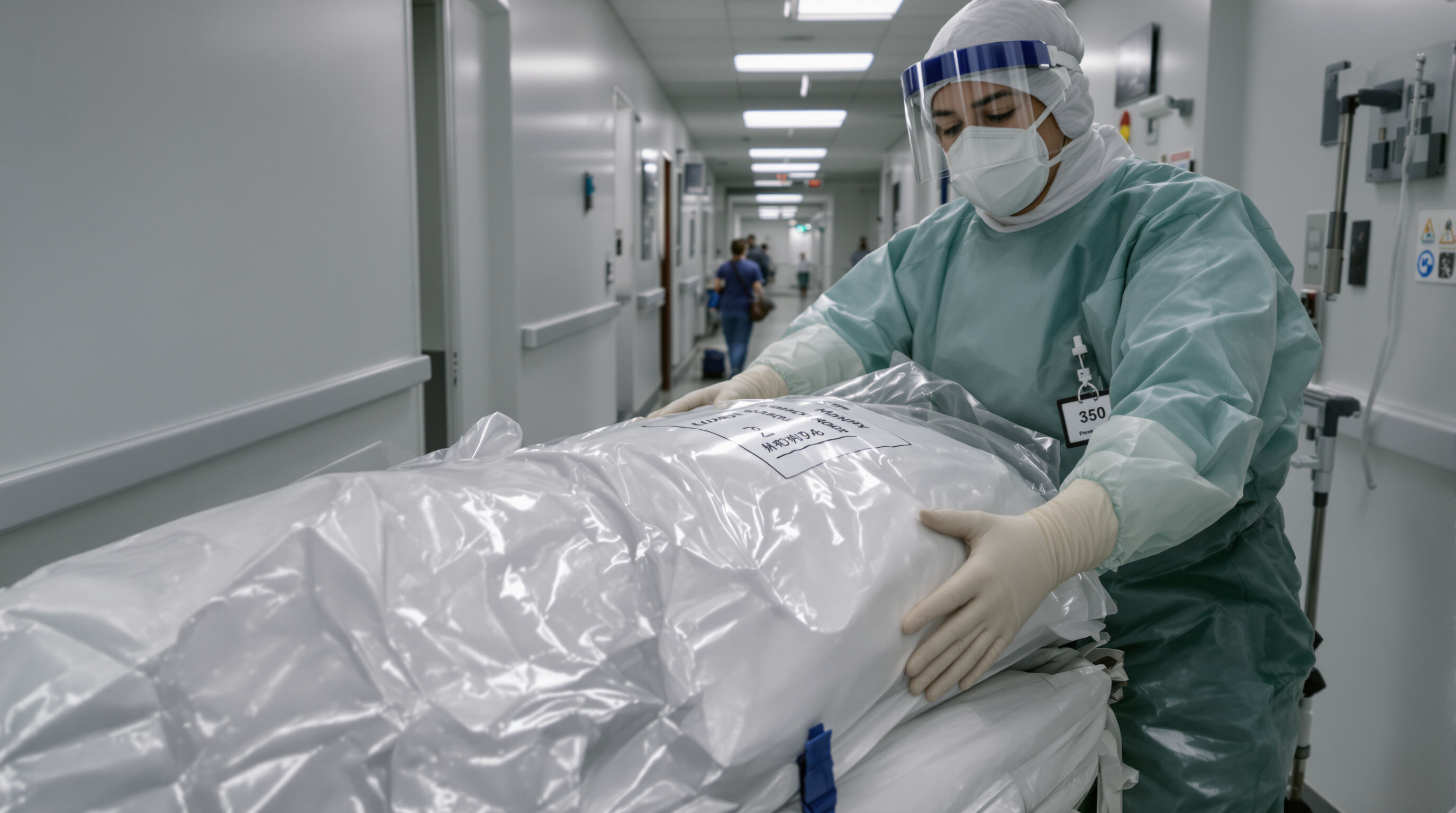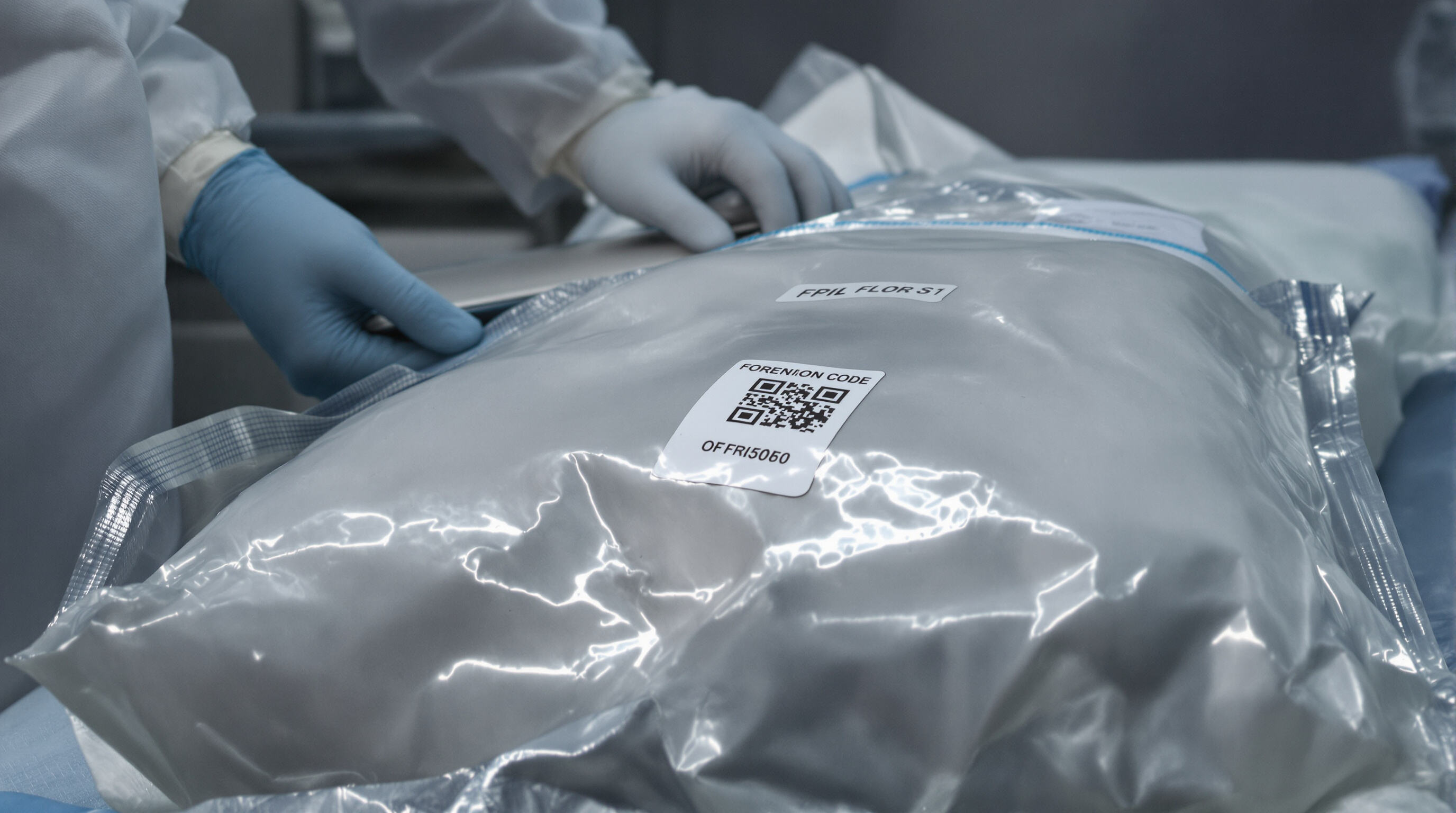Preserving Dignity and Safety Through Secure Body Bag Use

Body bags with proper labeling serve a dual purpose protecting both the deceased and those who handle them from coming into contact with biological risks while still showing respect for human remains. Made from materials that resist punctures and have sealed seams, these containers significantly cut down on fluid leaks and stop pathogens from spreading. According to data from hospitals that implemented standard operating procedures, there was around 92 percent fewer contamination cases reported last year according to the National Health Safety Report. The external labels are really important too since they help identify bodies correctly when being moved around, which makes sure everyone handles them properly no matter where they end up going next.
Meeting Legal and Ethical Standards with Clear Labeling
Proper labeling isn't just good practice but actually required by law according to agencies such as OSHA and local health authorities. These organizations insist on clear records showing who died, when it happened, and what caused it all so there's no confusion later on. According to a recent study done last year, around three out of four coroners think these standard labels are pretty much necessary if we want to avoid those messy misidentification lawsuits down the road. From an ethical standpoint too, having proper labels makes it easier to get in touch with families quickly. This matters a lot especially when dealing with contagious illnesses where time really counts. Families deserve to know what's going on without waiting forever for answers.
Compliance with UN 2814 and Hazardous Material Handling Protocols
Body bags handling Category A infectious substances need to meet UN 2814 specs, which means they have to be made from materials that resist tearing and feature those three seam welds everyone talks about. According to what the CDC says in their infection control guidelines, there should be clear "Do Not Open" labels along with those red biohazard markings so nobody accidentally comes into contact with dangerous stuff when there's an outbreak going on. Back in 2014 during the Ebola situation, hospitals that actually followed these rules while also training their staff saw something pretty impressive happen - secondary infections dropped by almost two thirds compared to places where these protocols weren't properly enforced.
Maintaining Chain-of-Custody with Visible Contact and Identification Information
Waterproof labels with case numbers, recovery spots, and investigator contacts are essential for forensic work these days. Research looking at around 1,200 police departments found that when body bags had proper labels, evidence stayed intact about 41% better than those without any marking. The newer barcode systems really changed things though. They let investigators track stuff digitally all the way from crime scenes to the morgue. This closes those annoying documentation gaps we used to see and makes sure there's a clear paper trail everyone can check later on.
Design Features That Ensure Security, Durability, and Clear Identification
High-performance materials and structural integrity in body bag construction
Modern body bags use heavy-duty polyethylene or polypropylene blends engineered to withstand 45 lbs/in² pressure (ASTM F1984-21) without sacrificing flexibility. These materials prevent leakage while allowing ease of movement during transportâessential when managing remains contaminated with biohazards or decomposition fluids.
Reinforced zippers, double seals, and puncture-resistant barriers
Military-grade zippers with 8.5 mm teeth and triple-stitched seams reduce contamination risks by 92% compared to single-stitched designs (CDC Burial Guidelines 2022). Overlapping flaps with adhesive seals provide secondary containment, while inner PVC linersârated for 0.08 mm puncture resistanceâmaintain integrity during long-term storage.
Integrated labeling panels and transparent windows for visual ID
Polycarbonate windows (3.5" x 5") with UV-stable etching retain marker legibility for over 180 days. Tamper-evident label pockets with sewn edges securely hold printed IDs, meeting OSHA 1910.1030 standards for bloodborne pathogen tracking. Color-coded panelsâred for biohazards, yellow for pending IDâallow rapid triage, improving response efficiency in disaster scenarios.
Standardized Labeling Protocols in Mass Casualty and Pandemic Response
Efficient decedent management during large-scale crises relies on systematic labeling that minimizes errors while upholding dignity. Labeled body bags address identification challenges in disaster zones and pandemics through internationally supported protocols.
Challenges in Victim Identification During Large-Scale Disasters
In mass casualty incidents, emergency teams have a critical 72-hour window (WHO 2023) to identify victims before decomposition obscures distinguishing features. Traditional paper tags are vulnerable to damage from moisture, biohazards, or friction during transport, increasing misidentification risks in chaotic environments.
Preventing Misidentification With Consistent Labeling Systems
UN-approved body bags with sewn-in labeling panels ensure permanent legibility through chemical-resistant vinyl tags, tamper-evident seals, and dual-language fields. These features reduced identification errors by 65% in flood-related mass fatalities compared to temporary methods (Journal of Disaster Medicine 2021).
Case Study: Labeled Body Bags in the 2014 West Africa Ebola Outbreak
The CDCâs Ebola response guidelines mandated UN 2814-certified body bags equipped with fluorescent biohazard stripes for night visibility, triple-layer isolation barriers, and pre-printed fields for contamination timestamps. This protocol enabled safe handling of 28,646 cases while preserving accurate records for forensic teams and families.
Color-Coded Tags and Barcode Integration for Rapid Sorting
Modern systems combine physical and digital identifiers to accelerate processing:
| Identification Method | Processing Speed Increase | Error Rate Reduction |
|---|---|---|
| Color-coded triage tags | 40% faster sorting | 22% fewer mismatches |
| Embedded QR codes | Instant database access | 89% data accuracy |
During the 2023 Türkiye earthquakes, emergency responders using barcode-enabled body bags processed 1,200 victims per day with 98.7% identification accuracy (UNICEF Disaster Report 2024).
Applications Across Healthcare, Law Enforcement, and Emergency Services
Hospital Morgue Practices and Infection Control With Labeled Body Bags
Hospitals use labeled body bags to uphold infection control and dignity in postmortem care. Bags with tamper-evident seals and biohazard labels reduce staff exposure risks by 72% compared to unsecured alternatives (Journal of Hospital Infection, 2022). Permanent documentation panels allow clear marking of patient identifiers, minimizing mix-ups in high-volume morgues.
Law Enforcement Forensic Transport and Chain-of-Evidence Requirements
Law enforcement relies on body bags with non-porous interiors to preserve biological evidence. Unique serial numbers on reinforced tags establish a verifiable chain-of-custodyâa practice adopted by 89% of U.S. crime scene units. Double-zippered closures prevent unauthorized access during transit to medical examiner facilities.
EMS Field Triage and Temporary Decedent Management
EMS teams use lightweight, water-resistant body bags with exterior triage tags during mass casualty incidents. Color-coded labeling systems help categorize victims by urgency, reducing misidentification errors by 54% in field settings. Transparent face panels allow visual confirmation without breaking containmentâcritical when remains are held temporarily before formal processing.
Digital Integration: Enhancing Labeled Body Bags with Technology

Photographic Documentation at Point of Recovery for Accurate ID
Capturing high-resolution images at the time of body bag sealing creates reliable visual records before transport. This practice reduces identification errors by 37% compared to post-transfer documentation (Journal of Forensic Sciences 2023), especially when dealing with decomposed or visually similar remains.
Linking Physical Labels to Digital Records via QR Codes and RFID
QR codes and RFID tags link physical body bags to encrypted cloud-based records. A single scan retrieves key dataâlast known location, medical alerts, preliminary cause of deathâwhile maintaining chain-of-custody. According to the 2025 Packaging Technology Report, these dual-layer systems reduce administrative errors by 52% in mortuary operations.
Emerging Trend: National Databases for Real-Time Decedent Tracking
Centralized platforms now allow real-time updates across hospitals, coronersâ offices, and transport networks. Louisianaâs 2023 flood response pilot used GPS-enabled body bags to automate notifications and share data across agencies, reducing missing persons reports by 68% (FEMA Case Study 2024). This integration marks a shift toward coordinated, transparent decedent management nationwide.
FAQ
Why is proper labeling of body bags necessary?
Proper labeling is crucial for legally and ethically managing decedent remains, ensuring correct identification and communication with families, and complying with health safety guidelines like those from OSHA.
What makes labeled body bags effective in preventing contamination?
High-performance materials, reinforced features, and proper sealing in body bags prevent leakage and contamination while preserving the safety of those handling the remains.
How do modern technologies enhance the effectiveness of labeled body bags?
Technologies such as QR codes, RFID, and digital databases streamline data management, ensuring precise tracking and quick access to identification records throughout the handling process.
Table of Contents
- Preserving Dignity and Safety Through Secure Body Bag Use
- Meeting Legal and Ethical Standards with Clear Labeling
- Compliance with UN 2814 and Hazardous Material Handling Protocols
- Maintaining Chain-of-Custody with Visible Contact and Identification Information
- Design Features That Ensure Security, Durability, and Clear Identification
- Standardized Labeling Protocols in Mass Casualty and Pandemic Response
- Applications Across Healthcare, Law Enforcement, and Emergency Services
- Digital Integration: Enhancing Labeled Body Bags with Technology
- FAQ


